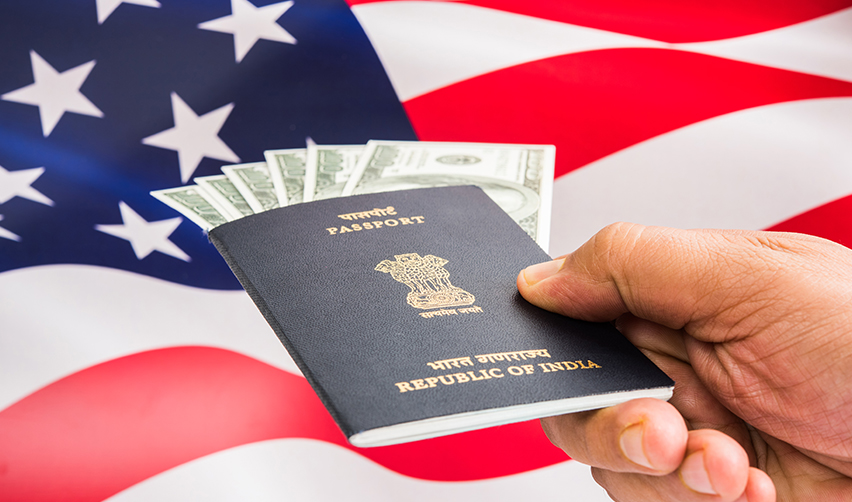Visa Retrogression in the EB-5 Program
Cutoff Dates for India in the October 2022 Visa Bulletin
Indian EB-5 Investors Can Avoid Delays With a Set-Aside EB-5 Visa
Which Set-Aside Visa Category Is Best for Indian Investors?
According to the October 2022 Visa Bulletin published by the Department of State (DOS), India has now entered into EB-5 visa retrogression. This development means that Indian EB-5 investors will now face significant additional delays before obtaining their EB-5 visas. Notwithstanding this setback, new Indian investors will be able to avoid these delays by investing in one of the set-aside EB-5 visa categories.
Visa Retrogression in the EB-5 Program
The limited number of EB-5 visas available each fiscal year—approximately 10,000—creates processing backlogs for investors from countries with a high demand for EB-5 immigration.
Since each participating nationality in the EB-5 program is entitled to a maximum of 7% of the total annual allotment, investors from countries with a high volume of EB-5 visa applicants typically face processing backlogs. This situation is compounded by the presence of dependent family members in EB-5 visa applications; each dependent family member of an EB-5 investor also receives a visa, further depleting the visa supply.
Most countries have a relatively low demand for EB-5 immigration and do not use up their yearly allotment of visas. However, when a country’s number of EB-5 visa applications exceeds its number of available visas, that nationality has entered visa retrogression.
EB-5 investors from countries in visa retrogression will face slower processing for Form I-526E, the first visa petition in the EB-5 immigration process. (This also applies to investors who filed Form I-526, which was previously used by both direct EB-5 investors and investors in regional center projects.)
The DOS has further delayed the immigration process for Indian EB-5 investors by imposing cutoff dates for this nationality.
Cutoff Dates for India in the October 2022 Visa Bulletin

As of the October 2022 Visa Bulletin, Indian EB-5 investors are subject to a final action date of November 8, 2019. This means that only investors who filed their I-526 petitions before that date are eligible to receive their EB-5 visas. All investors who filed Form I-526 or I-526E after November 8, 2019, must wait until the final action date is moved forward by the DOS.
Indian investors are subject to an additional restriction in the form of a date for filing of December 8, 2019. As a result, Indian investors who filed Form I-526 or Form I-526E after this date will not be able to apply for an EB-5 visa, even if they have received approval for their I-526E or I-526 petition.
Indian EB-5 Investors Can Avoid Delays With a Set-Aside EB-5 Visa
The EB-5 Reform and Integrity Act of 2022 now sets aside 32% of the yearly EB-5 visa pool for investors in high-unemployment targeted employment area (TEA) projects, rural TEA projects, and infrastructure projects. Investors in these project categories will be able to avoid the processing delays associated with visa retrogression, regardless of their country’s visa supply.
Which Set-Aside Visa Category Is Best for Indian Investors?
While infrastructure EB-5 projects are a little-known project category and only receive 2% of the EB-5 visa pool, rural and high-unemployment TEA projects are much more viable options for Indian investors interested in a set-aside visa.
Approximately 95% of all EB-5 projects have been located in high-unemployment TEAs, reflecting this project category’s popularity among EB-5 investors. This also indicates that the limited supply of high-unemployment TEA set-aside visas will be depleted relatively quickly, and this category may become oversubscribed in the coming months. Investors who prefer the high-unemployment TEA project category are advised to invest and submit Form I-526E as quickly as possible, as having an earlier I-526E priority date (that is, the date on which the petition was filed) can help them to avoid even longer wait times.
The safest option for Indian EB-5 applicants is to invest in a rural TEA project. At 20%, this category has by far the largest share of set-aside visas and represents a safer path to avoid delays associated with visa retrogression.
It is also worth noting that investors who already live in the United States under a non-immigrant visa can file Form I-485 to adjust their status concurrently with Form I-526E, which can allow them to obtain employment authorization and other benefits even before receiving their visas. Indian investors with a non-immigrant U.S. visa may consider filing Forms I-485 and I-526E before September 30, 2022.
Avoiding India Visa Retrogression Delays with a Rural TEA Project
EB5AN is pleased to offer two institutional-quality rural TEA projects: Wohali Utah and Twin Lakes Georgia. Construction is already underway on both of these projects, and both offer an I-526E approval refund guaranty for investors.
Wohali Utah is a 428-unit golf community outside Park City, Utah, and has been recognized as one of the leading EB-5 offerings on the market. Similarly, Twin Lakes is another low-risk option with a proven and profitable business model in the housing sector.
For information on the EB-5 program and the best way to obtain an EB-5 visa, Indian investors can schedule a free consultation with EB5AN.








